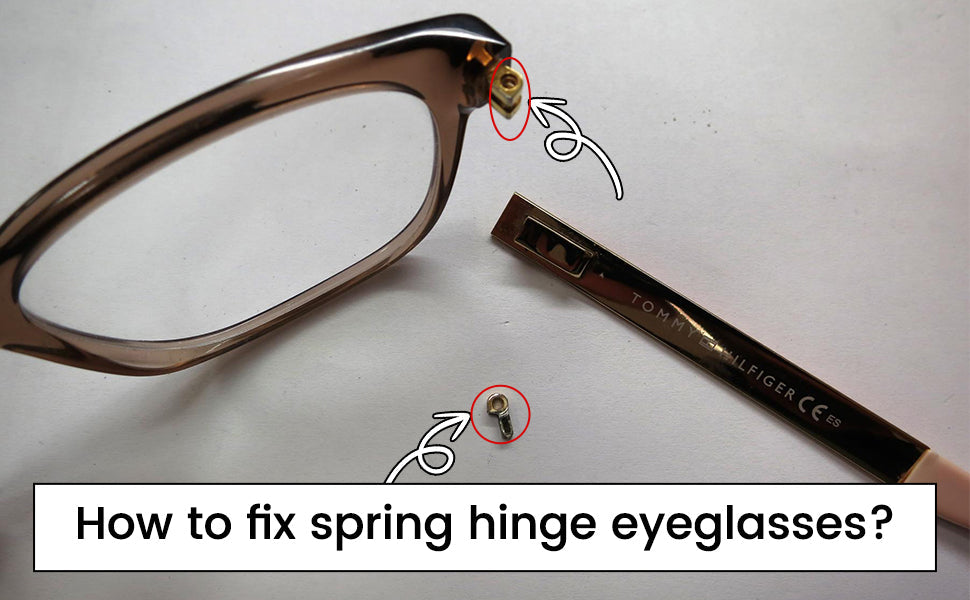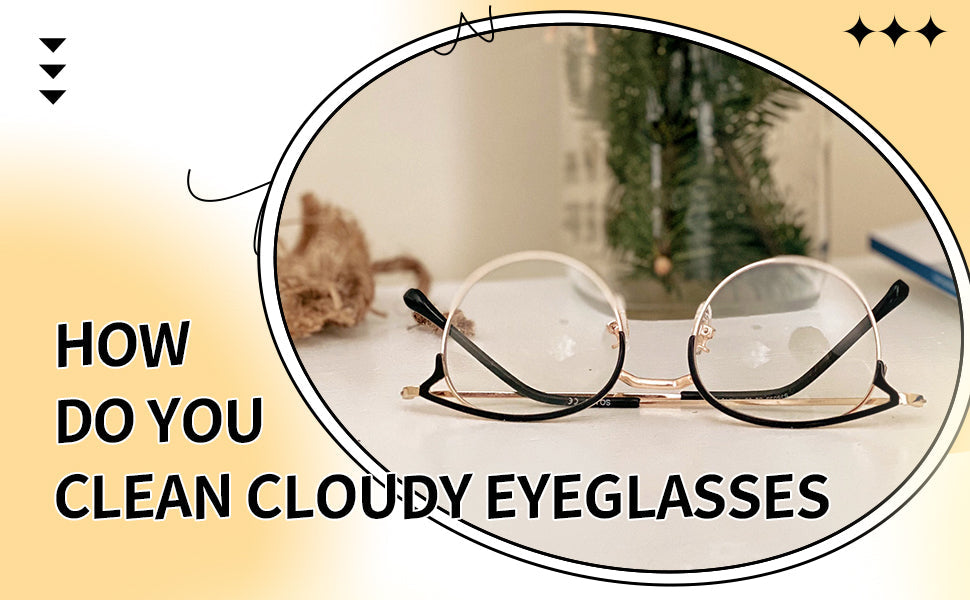
How To Fix Spring Hinge Eyeglasses?
People with poor vision would agree the most important possession is their eyeglasses. If you cannot see the world properly, then you are missing something very precious. But we tend to take our eyeglasses for granted. Whenever needed, we just unfold the arms of the eyeglasses and place them snuggly over the ears. And fold it back when not required.
Have you ever wondered if this simple task of unfolding and folding the eyeglass heedlessly can weaken the hinges of the arms (also known as the temple) and destroy the frame? One fine day you would have a broken arm in your hand unable to wear the eyeglasses.
The hinges on the arms are like the elbow of your hands. Misuse it and you have difficulty moving your forearms. The consequences are too obvious to explain.
What's noteworthy is that we only realize the implications after the damage has occurred. Until then, our recklessness triumphs over our prudence. Even if you handle this delicate accessory with care, the hinge may pop out of a certain frame.
A dependable, durable hinge is an essential element of the craftsmanship of a frame. When it comes to glasses, you generally get what you pay for.
This article guides you on how to fix spring hinge eyeglasses, in case it is damaged.
The Mischievous Twin Hinges
One of the most crucial micro parts of an eyeglass frame is the hinge. It allows you to open and close your spectacles conveniently. Hinges can break and dislocate the temple because of misuse or poor mechanical design.
Hinges vary in shape and size based on the frame material. Designers and engineers create innovative hinges to help the temple function better and stay longer. There are four types of hinges in most cases: rivets, heat sunk, welded, and spring hinges.
Apart from this, some brands, such as IC Berlin and Mykita, have exclusive designs to stand out in the competition with distinct styles. They are not all created equal. Each kind may be made to be sturdy or cheap and inferior.

The bad news is that every hinge, regardless of type or material, has a breakpoint. Rivets snap, metal bends and breaks, springs degrade, and the entire structure eventually disintegrates from the frame. There might be several reasons for this. An impact, being stepped on, being rolled over in bed, or anything else can cause it.
Working of Spring Hinges
The place spring hinges on or even inside the glasses' temple. It allows the temples to flex open by using a spring-loaded piston mechanism found in spring hinges positioned inside an enclosure on the temple.
The temple widens past its stopping point, compressing a spring. This can improve user comfort while also providing some breakage prevention. The strain on this mechanism pulls the arm back inside as we extend the temple further than it is in its resting state.
They often limit conventional barrel hinges to 90 degrees of movement. However, spring hinges have the benefit of allowing you to stretch the arms considerably further than other types of hinges.
On the other hand, the metal link between the frame front and the temple is rather tiny and prone to breakage. In most circumstances, we can replace the original spring hinge's body with a new spring hinge, restoring its functioning.
How to Fix Spring Hinges?
Spring-hinged spectacles are more complicated to repair, and they typically break first unless built with high-quality components. Flex hinges, also called spring hinges, include a small spring that allows the arms of glasses to be flexible.

Because of the spring, the plunger retracts into the framework if the little temple screw is missing or only partially placed. The other hole in the glasses frame becomes misaligned as we join the plunger to the barrel hole in the temple.
When you try to put a temple screw into an incorrectly aligned hole, you get a misalignment screw that cannot be fully bolted in. Before you can effectively push the screw in and fasten the temple to the frame, you must first align the holes. Simply physically extend the spring hinge and secure it in place for the time being.
TIP: You will need a precision screwdriver and a replacement screw, both of which are included in an eyeglasses repair kit.
steps to fix a spring hinge:
1: Remove the temple from the frame altogether.
2: Attach the spring hinge's hole to something, such as a paper clip or a pin, to provide extra grip.
3: To fully stretch the spring hinge, pull the temple outwards.
4: Tuck a paper clip or pushpin into the newly formed gap to maintain the hinge in its stretched position.
5: Align both the temples with the glasses frame.
6: Carefully insert the small temple screw into the hinge.
7: To attach the temple to the frame, use a precision screwdriver to drill the screw.
8: Remove the paper clip or pushpin you were using to hold the hinge open.
There are two types of spring hinges, depending on the frame design: exterior and internal. A noticeable protrusion on the side of the temple that faces your head indicates an external hinge.
An internal spring hinge, on the other hand, is hidden inside the temple in a casing. In addition, an internal spring hinge cannot be repaired or replaced. We must change the entire temple because the replacement has a fully working spring hinge.
It is wise to get your glasses corrected by an optician regularly to ensure that they are comfortable and do not fall off your face. Even if no untoward occurrence has happened, your frames might become out of shape because of normal wear and tear.
Conclusion
Routine maintenance can help your eyeglasses last longer. Sometimes a thorough cleaning, a minor makeover, and the replacement of a few critical spare components are all that is required. Take good care of your glasses, and if they need special attention, take them to your local optometrist. They will replace any worn components, thoroughly clean them with ultrasonic and/or steam, then tighten, adjust, and realign everything.






